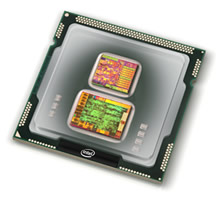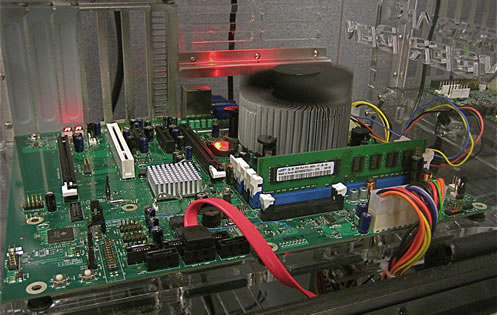E
 arlier this year Intel made a big splash with a new generation of Core i3 and Core i5 processors using the uber small 32 nanometer manufacturing process. Although this is eventually going to get dumped as ancient technology for an even smaller and more efficient way to produce chips, today it's state of the art.
arlier this year Intel made a big splash with a new generation of Core i3 and Core i5 processors using the uber small 32 nanometer manufacturing process. Although this is eventually going to get dumped as ancient technology for an even smaller and more efficient way to produce chips, today it's state of the art.
Intel recently published a whitepaper with some amusing 32nm facts that we are reproducing here for you. If you have ever wondered how small the logic inside these chips really is in 'measurable' terms, here are some random facts to give you some perspective:
A nanometer is so small that it takes a billion of them to make a meter. A billion is a huge number. A stack of a billion sheets of paper would be 100 km high. If you could walk a billion steps, you would go around the earth 20 times.
The original transistor built by Bell Labs in 1947 was large enough that it was pieced together by hand. By contrast, more than 60 million 32nm transistors could fit onto the head of a pin.
More than 4 million 32nm transistors could fit in the period at the end of this sentence.
A 32nm transistor contains gates that are so small, you could fit 3,000 of them across the width of a human hair.
A 32nm transistor can switch on and off over 300 billion times in one second. It would take you 4000 years to flick a light switch on and off that many times.
Compared to Intel’s first microprocessor, the 4004, introduced in 1971, a 32nm CPU runs over 4000 times as fast and each transistor uses about 4000 times less energy. The price per transistor has dropped by a factor of about 100,000.

The “World’s Fastest Man,” Usain Bolt would have to take 3,125,000,000 steps in the 100 meter dash if his stride length was 32nm.
If the pace of innovation in space travel had increased at the pace of Moore’s Law since 1971, you would now be able to travel at the speed of light, 671 million miles per hour.
Intel has shipped over 200 million CPUs using high-k/metal-gate transistors – the kind used in 32nm processors -- since the technology was first put into production in November 2007. This translates to over 50,000,000,000,000,000 (50 quadrillion) transistors, or the equivalent of over 7 million transistors for every man, woman and child on earth.
The price per transistor on a chip has dropped dramatically since Intel was founded in 1968. Some people estimate that the price of a transistor is now about the same as that of one printed newspaper character.
Read more...
 arlier this year Intel made a big splash with a new generation of Core i3 and Core i5 processors using the uber small 32 nanometer manufacturing process. Although this is eventually going to get dumped as ancient technology for an even smaller and more efficient way to produce chips, today it's state of the art.
arlier this year Intel made a big splash with a new generation of Core i3 and Core i5 processors using the uber small 32 nanometer manufacturing process. Although this is eventually going to get dumped as ancient technology for an even smaller and more efficient way to produce chips, today it's state of the art.



